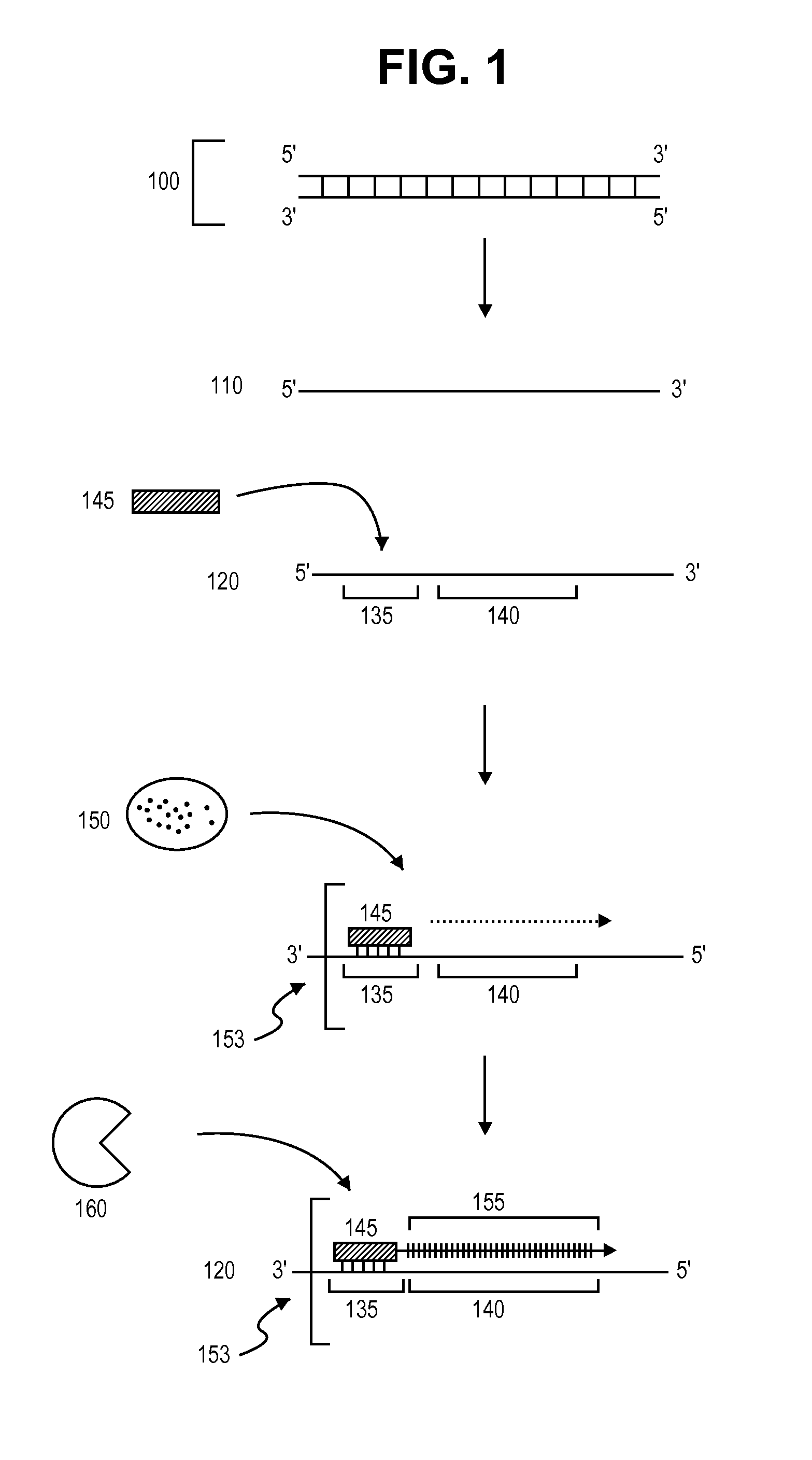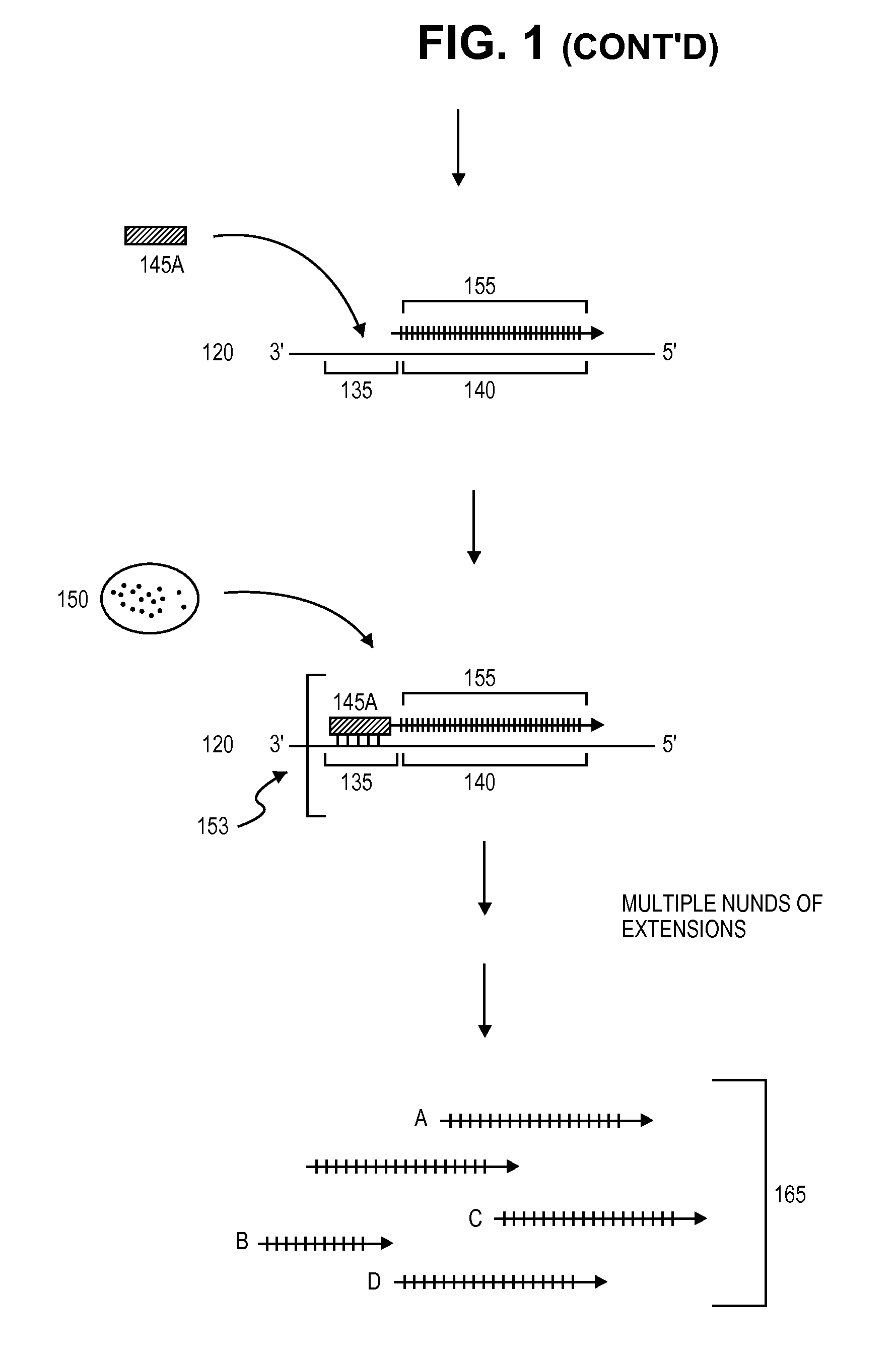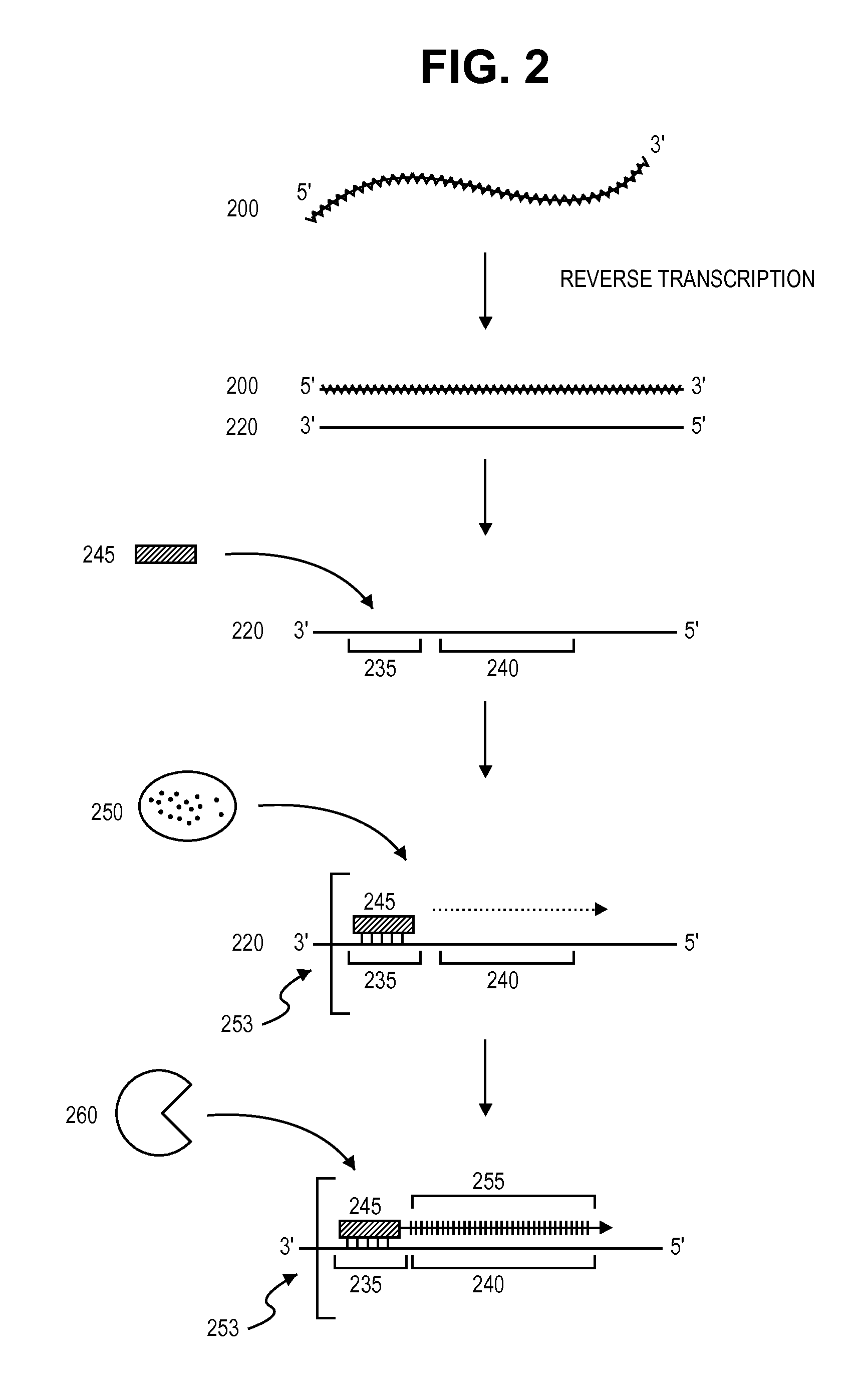Single-stranded polynucleotide amplification methods
a single-stranded polynucleotide and amplification technology, applied in the field of single-stranded polynucleotide amplification methods, can solve the problems of compromising the accuracy of the nucleic acid methods, sensitivity is a big challenge, and it is extremely difficult to detect rare mutations in the sampl
- Summary
- Abstract
- Description
- Claims
- Application Information
AI Technical Summary
Benefits of technology
Problems solved by technology
Method used
Image
Examples
example 1
Amplifying Single-Stranded Polynucleotides from a Double-Stranded DNA
[0126]This example provides one exemplary method of single-strand polynucleotide amplification. The steps of this method are schematically depicted in FIG. 1.
[0127]In a first step, double-stranded DNA 100 is provided. Double-stranded DNA 100 can be obtained from any source described herein using methods known in the art. Double-stranded DNA 100 is then denatured (for example by incubation at 95° C. for about 2 to about 5 min) to produce single DNA strands 110 and 120. Single DNA strand 120 comprises primer annealing site 135 and template sequence 140.
[0128]Next, RNA primer 145 hybridizes to primer annealing site 135 on single DNA strand 120 to form RNA / DNA hybrid 153. RNA primer 145 is then extended via the sequential addition of nucleotides in a template-specific manner by DNA polymerase 150 to produce target polynucleotide 155. The RNA portion RNA / DNA hybrid 153 is then cleaved (removed) by enzyme 160, which spec...
example 2
Amplifying Single-Stranded Polynucleotides from an RNA
[0130]This example provides another exemplary method of single-strand polynucleotide amplification. The steps of this method are schematically depicted in FIG. 2.
[0131]Briefly, a single-stranded RNA 200 is provided. RNA 200 can be an mRNA extracted from a single cell sample or from a single cell. RNA 200 can be obtained from any source described herein using methods known to those of skill in the art. RNA 200 is then reverse transcribed to produce single-stranded cDNA 220, which comprises primer annealing site 235 and template sequence 240.
[0132]In a next step, RNA primer 245 hybridizes to primer annealing site 235 to form RNA / DNA hybrid 253. RNA primer 245 is then extended via the sequential addition of nucleotides in a template-specific manner by DNA polymerase 550 to produce target polynucleotide 255. The RNA portion RNA / DNA hybrid 253 is then cleaved (removed) by enzyme 260, which specifically digests RNA that is hybridized t...
PUM
 Login to View More
Login to View More Abstract
Description
Claims
Application Information
 Login to View More
Login to View More - R&D
- Intellectual Property
- Life Sciences
- Materials
- Tech Scout
- Unparalleled Data Quality
- Higher Quality Content
- 60% Fewer Hallucinations
Browse by: Latest US Patents, China's latest patents, Technical Efficacy Thesaurus, Application Domain, Technology Topic, Popular Technical Reports.
© 2025 PatSnap. All rights reserved.Legal|Privacy policy|Modern Slavery Act Transparency Statement|Sitemap|About US| Contact US: help@patsnap.com



